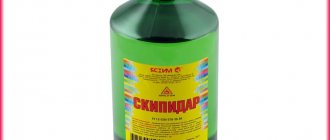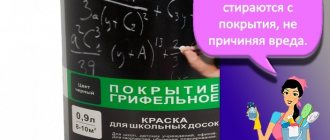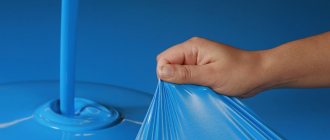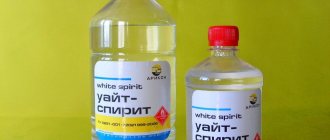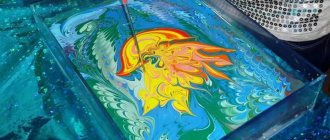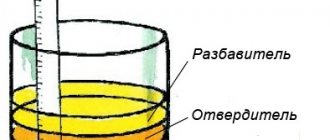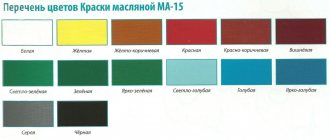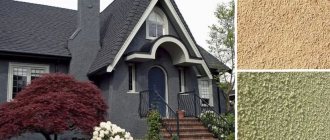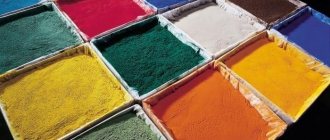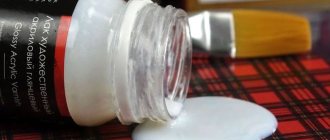What is watercolor made of? In this article I tell you what watercolor paints are made of: their chemical composition and manufacturing process.
Watercolors are painting paints created using coloring pigments and plant adhesives. A distinctive feature of this paint is its good dilubility with water, and the thin, translucent layer with which it lies on the paper.
Watercolors are a very ancient material. Its first mentions date back to the 2nd century, and the country of invention is considered to be China. In order to start painting with watercolors, you need, in addition to paint, to purchase thick paper, it’s called watercolor, and a few soft brushes made of natural bristles - roll or kolinsky.
Watercolor, as I already said, is a very ancient paint. For so many years, she has managed to gather millions of fans around the world. This is not surprising, because watercolor works are some of the most beautiful works in painting.
That is why, in order to get to know the paint better and understand why everyone loves it so much, I have prepared for you an article about the composition of watercolor paints. Read to the end and you will find out what watercolor paints are made of.
What could be better than watercolors?
This type of paint is familiar to everyone (so to speak, greetings from distant childhood). With watercolors (by the way, they were invented by the Chinese) you can paint any complex landscape - after all, there are about forty colors, and even a huge number of various shades.
What is good about this type of paint? Because it is an environmentally friendly product that is not scary to give even to children to occupy their leisure time. Let them draw! Maybe they will become Repin or Aivazovsky. Drawings made with watercolors are distinguished by a certain airiness, naturalness, lightness and transparency.
What are watercolor paints made from? The composition of this type of paint includes:
- Transparent resin. It is obtained by drying the juice of various types of acacias.
- Honey.
- Granulated sugar (or glycerin).
- Plasticizing substances that improve the quality characteristics of the product.
Important! Despite all the advantages of watercolors, do not forget about one point that should alert you: the composition of the paints must also include antiseptic substances (for example, the universally unloved phenol). Therefore, when using watercolors, you should not forget about this and show miracles of carelessness.
Production and consumption
Creating paints is a technologically complex process that has a negative impact on the environment. One operator error and a multi-ton batch must be disposed of. Production factories are built far from residential settlements, water and forest resources. Annually:
- Millions of colors of paint are produced for exterior and interior use;
- Hundreds of industrial fires occur, since fresh material ignites very easily.
The only way a person can help nature is to immediately purchase high-quality material that will not need to be recycled or thrown away.
Creating paints is a technologically complex process that has a negative impact on the environment.
Production
There are 10 leading companies in Russia that have been producing good products for many years. Competition among them is healthy, since the external market helps to develop, i.e. exporting the product to other countries. Among the most famous:
- NPF "Emal";
- NOVOCOLOR;
- FKP "Kazan State Treasury Powder Plant".
In addition to paints, factories produce varnishes, putties and other building materials.
In addition to paints, factories produce varnishes, putties and other building materials.
Consumption
Surprisingly, the statistics regarding paint consumption in Russia stand out. For example:
- Consumption of paint per capita is 4 liters per year;
- In Western countries - 20 liters per person per year.
Statisticians say that as citizens’ incomes increase, the indicator will grow and will soon approach the European norm.
Consumption of paint per capita is 4 liters per year.
We make our own paints
Of course, some super discerning professional, having taken a look and tried to use homemade paints, will snort and say that it is impossible to create a “masterpiece” work of art. But in defense of paints made at home with our own hands, we present the following arguments:
- they are excellent for everyday activities with children (especially preschool age), as they do not eat into the skin of the hands and can be easily wiped off (and if they get on clothes, they can be easily washed off);
- there is no need to visit retail outlets very often to purchase goods (you always have it in stock at home);
- the colors do not mix with each other and remain clean;
- They have a bright color and glide like butter.
So let's get started. You will need:
- baking soda - four tablespoons;
- table vinegar - two tablespoons;
- any light syrup - 1/2 tablespoon;
- starch (preferably corn) - two tablespoons;
- dyes in liquid form or in powders (exclusively for food);
- any suitable containers (for example, muffin or ice tins).
Basic information
Absolutely any paint for painting consists of a binder and pigment, presented in powder form. The pigment in acrylic, watercolor and oil paints is the same, but the bases are different.
For example, watercolors are made from gum arabic, honey, glycerin, dextrin or ox bile.
The binder in gouache is fruit gum, in tempera it is casein, and in acrylic paints it is polyacrylic resin. For hundreds of years, the recipe for making oil paints has not changed. They are made on the basis of linseed, nut or poppy oil, wax and resin.
Pigments and fillers are crushed and then brought to a liquid state using a thinner. Modern formulations are distinguished by the presence of additional ingredients and modifiers.
They can improve the adhesion of components, replace expensive pigment, and regulate the viscosity or drying speed of paint. Paint that is applied to canvas or other substrate contains liquid. Some of this liquid is absorbed into the base, and the rest evaporates.
Only the hardened fraction remains on the base, preserving the relief that the artist gave it.
Oil had no analogues for a long time, since such a dye with a high viscosity index was ideal for artistic creativity, and the image obtained with oil paints was reliably fixed on the canvas.
An example of this is the paintings exhibited in every art museum. These paintings are several hundred years old. In addition, oil paints do not change shade over time, so they accurately and believably convey the color reality of the surrounding world.
As you know, before each artist made his own paints, which significantly complicated the process of painting. Today, artistic materials are presented in all their diversity.
It should be noted that oil paints are more expensive than, for example, gouaches or watercolors.
That is why the form of release of oil paints can be different. They are sold not only in sets, but also in individual tubes corresponding to certain shades.
By purchasing paint individually, the artist can optimize costs when painting. But the costs are not limited to purchasing paint, as other consumables are also needed. In general, oil painting is considered a fairly expensive activity.
Oil paints are not suitable for children, especially if the child is just beginning to learn the basics of artistic creativity.
Firstly, not every parent is ready to spend a lot of money on banal entertainment, which can be replaced by painting with watercolors.
Secondly, oil paints contain substances that are unsafe for children. Typically, oil painting is done by those artists who have sufficiently honed their skills and have decent experience.
Algorithm for making solid watercolor paints
How to make watercolor paint:
- Thoroughly mix in a container with a spout (then it will be very convenient to pour the mixture into molds) two components: soda and vinegar.
Important! Take your time: wait until the hissing stops. Only then continue to “create”.
- Add the following two ingredients: starch and syrup. Mix everything thoroughly, leaving no lumps.
- Pour the mixture into molds.
- Unpack the dyes and add them to the molds.
On a note! The molds are small, so we use toothpicks or matches to stir the dye in them. We do everything very quickly: you need to complete it within 1 minute. And one more nuance: if the consistency of the paints turns out to be slightly runny, then just add a little starch.
- Let the paints dry. This will take 1-2 days (if you place a tray with freshly prepared paints on the battery, the drying process will go faster).
Once they're completely dry, just take your brush, dip it in water and start sculpting!
Consumables for surface preparation
Preliminary work begins with the distribution of the primer solution. This mixture forms an opaque or transparent homogeneous layer with good adhesive properties. It is necessary to improve the quality of paintwork materials in accordance with GOST P 51693. The primer helps to increase the density of the material and the uniform distribution of paint, plaster, putty, wallpaper glue and other compounds.
Depending on the purpose, primers can be anti-corrosion (for metal products), antiseptic (for wood processing), impregnating or deep penetration.
The next consumable that is required to prepare the surface is putty. The solution is available in a liquid or paste-like consistency, which allows you to eliminate surface defects and form an even layer.
The preparatory stage involves the use of compounds to eliminate small cracks, potholes or scratches, as well as pore filler.
Gouache paints are also a good choice.
This type of paint is loved by both professional artists and those who have just embarked on this path. However, the choice is good, since gouache has quite rich and bright colors; thick and oily texture. Gouache paints are divided into poster paints (thicker in consistency and brighter; used for design work) and art paints.
What are gouache paints made from? The question is very simple. This type of paint is a “direct relative” of watercolor. The composition includes the same pigmented particles and the same water-soluble glue-based component. The only difference is that natural white is added to the gouache, which gives it greater density, delicate velvety and whiteness. Paintings made using watercolor or gouache are distinguished by their trepidation, tenderness and liveliness. They cannot be confused with other equipment.
Useful tips
When choosing oil paints, several factors should be taken into account, and price is one of them.
A few useful tips may help a potential buyer make the right choice.
- Remember that with the help of such primary colors as red, blue, yellow, white and brown you can get different shades, so you should not rush to purchase a large number of tubes, but rather focus your efforts on mastering the technique of mixing paints.
- You may need more titanium white than you planned, so it is recommended to buy it in advance.
- The volume of the tube depends on the field of activity. If you are a beginner amateur, then a tube of 10 to 46 ml will be enough for your first time.
- High-quality paints should contain natural oils. They are much preferable to synthetic ones. The same applies to pigments.
Why not use oil paints?
It’s all very simple: since the paint is oil-based, that means it contains what? That's right - oil. History is silent about who invented it. This type of paint is hardly suitable for children who paint at home. But for children (future, perhaps, brilliant artists) who attend specialized artistic institutions, they are quite suitable (after all, they, children, know how to use them without harm to their health).
What are oil paints made from? They are mixed mainly with linseed oil, which has undergone a unique technological treatment. In addition to this main component, the product contains resin (alkyd) and substances that allow the paint to dry quickly. And this is an important detail.
What are the benefits of oil paints? The fact that over a long period their colors remain as bright and deep.
Second cooking method
Glycerin is poured into the reactor with additional binding elements. Next, a coloring pigment is added to the bowl (special bowl), and the entire resulting mass is mixed for a certain time. Then, in a thin stream, the watercolor blank enters a paint grinding machine designed for a specific color and is ground. Next, the mass enters vats, from which it is poured through special hoses into a packaging machine, where the colors are packed into ready-made containers for sale, and then the watercolor is dried for two days.
Try using acrylic paints
Today acrylic is a very popular coating, which a few decades ago was generally unknown to anyone. Progress does not stand still. Acrylic paints dry very quickly, have a fairly rich palette of colors, and can be easily applied not only to paper or cardboard, but also to plastic or ceramics.
What are acrylic paints made from? First of all, it should be noted that this is, of course, a synthetic product, which is created on the basis of polymers such as ethyl, butyl and methyl. In addition to them, water and pigments are present.
Natural pigments
Any palette is, first of all, primary colors. They are obtained thanks to the following pigments:
- Red: cinnabar, hematite, red ochres.
- Orange: realgar, vanadinite.
- Yellow: orpiment, jarosite, wulfenite, goethite, light ochres, light limonite.
- Green: glauconite, volkonskoite, chlorites, aegirine, augite, malachite, kerchenite.
- Blue: azurite (finely ground).
- Blue: lapis lazuli, azurite (coarsely ground), vivianite (indigo mineral), riebeckite.
- Violet: lapis lazuli (natural ultramarine, after moderate calcination).
- Red-brown: hematite, dark ochres, dark limonite.
- Brown-black: manganese oxides (psilomelane, vad).
- Black: coal, anthracite, magnetite.
How to “reanimate” acrylic paints
What to do - acrylic paints have dried out? How can I dilute them? Water. Just remember some conditions:
- There should be no impurities in the liquid. Therefore, you need to use distilled water (you can buy it at a hardware store or pharmacy). If you can’t purchase it, then simply boil regular tap water and leave it to sit for a while.
- The water temperature should be about +20 degrees.
Important! Proportions play an important role. If you dilute it in a ratio of 1:2 (that is, one part of the color mixture and two of water), then the solution will have a fairly liquid consistency and will only be suitable for use as a base layer. If the ratio is 1:1, then it is perfect as a base coat.
Features of the story
Oil paints appeared several thousand years ago, so no one can say for sure what exactly was the starting point in their history.
Traces of a substance similar to oil were recorded on the oldest monument of painting - the Bamiyan Buddha statue (Afghanistan). Its approximate age is about 27 centuries.
Unfortunately, history does not know a single name with which the invention of paints is associated.
Europe learned the technology of making oil paints quite a long time ago, but we are talking about the popularization of oil painting. In this vein, it is worth noting such a Flemish artist as Jan van Eyck. His work dates back to the middle of the 15th century. Let us make a reservation once again: we are not talking about the appearance of paints in Europe, but about the blossoming of their popularity.
Thus, the name of Jan van Eyck is associated with the technique of improving dyes for oil paints.
Naturally, he used the first prototypes in his works, as a result of which Eick’s paintings were radically different from the paintings of his contemporaries. From this point on, realism comes to the fore. The artist's work of that time is comparable in realism to modern photographs.
The new technique invented by the Flemish artist quickly spread throughout Europe. In particular, it gained popularity in France and Germany. A decade later, she came to Italy, where a new trend gave a powerful impetus to the development of an entire cultural movement, better known as the Renaissance.
Since this period, oil has been considered the main material of a true painter. Many world masterpieces are painted with oil paints. A prime example is Leonardo da Vinci's extraordinary Mona Lisa. The apogee of the popularity of oil painting was not fleeting. It continues to this day, that is, it lasts for six centuries.
Time cannot but leave its mark on the development of art. Since the end of the last century, oil painting has ceased to be one of the artist’s bohemian occupations and today is a common amateur hobby.
There are several reasons for this change in status:
- Increased well-being;
- Focus on creative needs and hobbies;
- Availability of material;
- The emergence of simplified oil painting techniques.
Paints for the little ones
There are paints that are intended for very young children who cannot hold a pencil or a brush. They are called finger ones. The paints adhere well to the surface and do not run off the fingers in any way. They are very easy to work with: just dip your finger into a jar of paint, then touch the paper (cardboard or glass). All is ready! You can exhibit in the gallery!
What are the components of such paints? They are made on a water basis and contain only food coloring. True, it is unlikely that the baby will like this product, since the colors have a bitter or salty aftertaste. This was done on purpose so that the child would not be tempted to eat them before lunch.
Compatibility of paint materials
ISO 12944-5 provides a detailed description of the compatibility of paints, taking into account their ability to maintain properties without exhibiting defects. Before painting the surface, you need to carefully study these parameters using the paint compatibility table.
| Type of composition applied | Primer layer | |||||||||||
| AK | AC | AU | VG | VL | GF | KF | ML | MS | MCH | PF | UR | |
| Alkyd-acrylic (AC) | + | + | – | – | + | + | – | – | – | + | + | – |
| Alkyd-styrene (MS) | + | + | – | + | – | + | – | – | + | – | + | – |
| Vinyl chloride (VC) | + | – | – | – | + | + | + | – | – | – | + | – |
| Oily (MA) | – | – | – | – | + | + | + | – | + | – | + | – |
| Epoxy (EP) | + | – | – | + | + | + | – | + | – | – | + | – |
| Melamine (ML) | + | – | – | – | + | + | + | + | + | + | + | – |
| Polyurethane (UR) | + | – | – | – | + | + | – | – | – | – | + | + |
Popular products
Among the products presented on the construction market, one can highlight Slovenian paints. The brand is represented on the Russian markets with a wide range of materials for wood protection. Wood coatings were developed by the manufacturer to provide reliable protection and preservation of wood from mold, mildew, and insects. Typically these are compositions of the alkyd group.
The second representative is Tikkurila. The products are known to many and have been practically tested more than once. The brand name is synonymous with high quality. Paintwork materials from this brand can be used everywhere. White paint looks very impressive and feels great on any surface.
Acrylic paint is offered, as well as alkyd-based and polycarrylate-based compositions.
Not only imported products are of high quality. The Yaroslavl plant of paints and varnishes produces a wide range of paints for different types of surfaces. The range includes all types of painting compositions with high technical characteristics for all types of surfaces. These are high-quality and inexpensive compounds.
This is not the entire list of manufacturers producing high-quality paint and varnish products. But these are the best of the best. The paint of these brands is the whitest.
Tips for choosing paint for walls and ceilings (2 videos)
Paint of different brands (25 photos)
General composition of coatings
Any paint must consist of several components, including:
- The pigment, in this case white, gives the paint composition its color.
- The base that connects all the components and forms a film on the surface.
- Various fillers are what give painted surfaces shine and strength.
- Additives that promote rapid drying, protect surfaces from fungal spores, and promote fire safety.
Enamel intended for interior decoration is not able to withstand negative natural influences, so it is not used for exterior work. But exterior paint can be used as interior paint.

